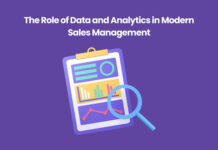“Supply chain optimization” is a fancy term for an objective as old as doing business itself: delivering goods to customers when they want them, at the price they desire while minimizing the cost of making the goods and getting them there. The precise details of this will vary from industry to industry, or even among similar businesses, but one thing is the same: Keeping costs down.
It sounds simple, but meeting customer demands while keeping costs at a minimum is difficult, even quite complex for most businesses. Business managers and small spend hundreds of hours and many long nights strategizing ways to achieve supply chain optimization. Supply chain analysts and consultants are paid huge fees to advise companies on how to achieve supply chain optimization.
So what about your business? You don’t have thousands of dollars to pay a consultant, so what should you do?
Understanding Your Fill Rate
If you want to improve your supply chain operation, the first thing is to assess your current situation. Are your customers being served with a product on time, or are they being disappointed by “sorry, we’re out of stock”? To measure this, you should calculate your fill rate: Divide the number of orders shipped, by the total number of orders placed, then multiply it by 100. That percentage is your fill rate.
For example, if you received 100 orders, and 95 of them were shipped, then your fill rate is 95%. You want your fill rate to be as high as possible. The greater your fill rate, the more efficient your business is performing in terms of filling customer orders.
If your fill rate is low or has declined, then you need to take action immediately. Businesses that can’t fill orders create dissatisfied, sometimes angry customers who will vent their experiences on social media. And this could be devastating for the future of your business.
Supply Chain Optimization Planning
Now that you understand your fill rate and why it’s important, it’s time to start planning. You need to sit down and work out a strategy that will address the demands of your customers while allowing you to make a reasonable profit.
If you’re a manufacturer, you need to discuss your plans with your suppliers to ensure you can deliver what is being promised to customers. Both manufactures and retailers should be in dialogue with their third-party logistic providers (Fed-X, UPS, etc.) to select a process that best suits their needs and demands of their customers.
But remember, you can’t just rely on third-party logistics firms. Your business is unique and you should take the time to create plans that specifically address your customers.
Technology Makes It Easier
As the business world embraces AI and blockchain, the importance of utilizing technology in achieving supply chain optimization cannot be overstated. Improving your fill rate might just be a question of upgrading your existing order fulfillment software or switching to a new platform.
Don’t Be Afraid
Supply chain optimization, like many other common business terms, can be intimidating at first glance. However, in reality, it’s nothing new. If you’re an entrepreneur who is passionate about your business, then achieving supply chain optimization is a challenge you’re more than capable of achieving.


















